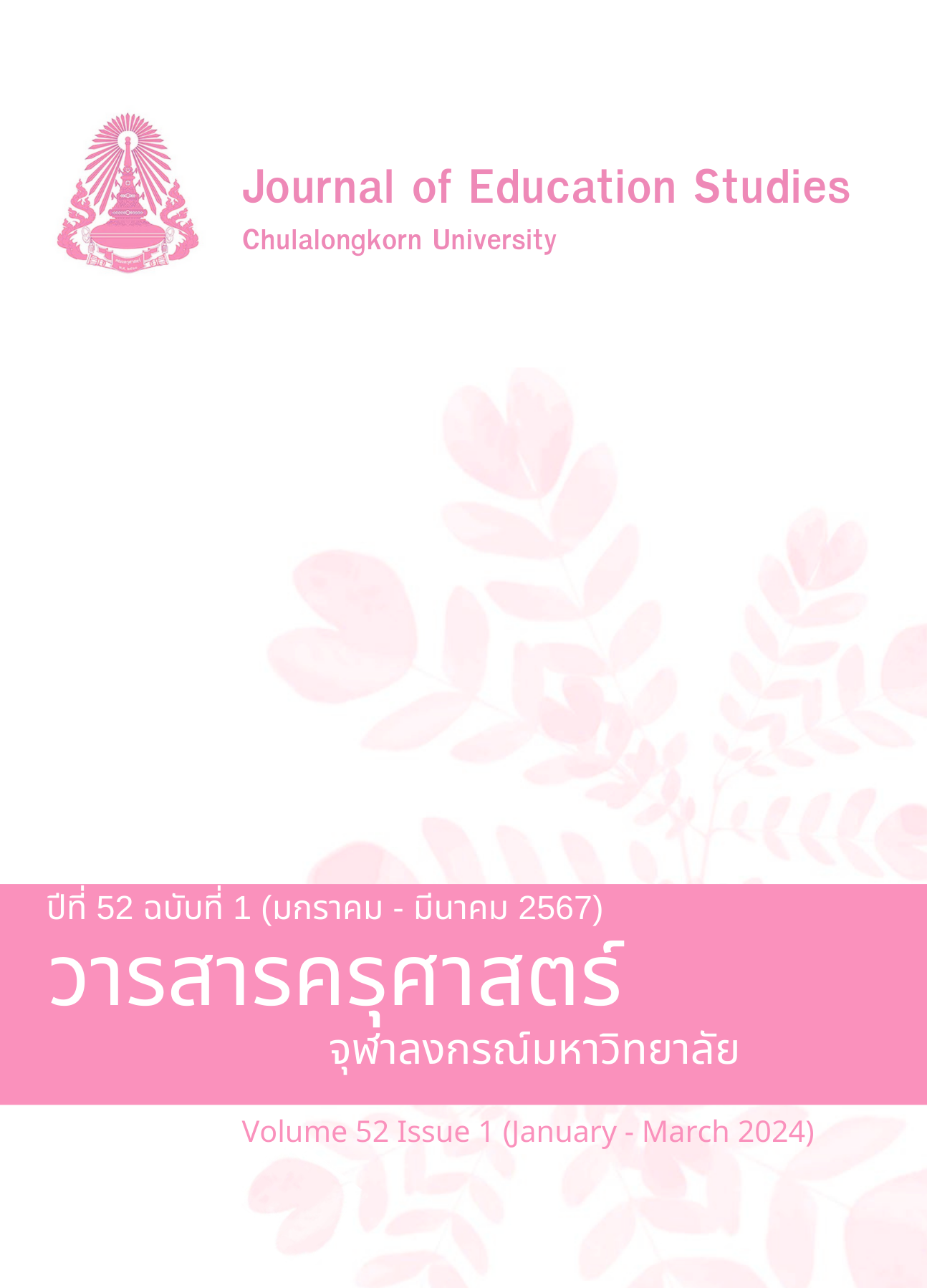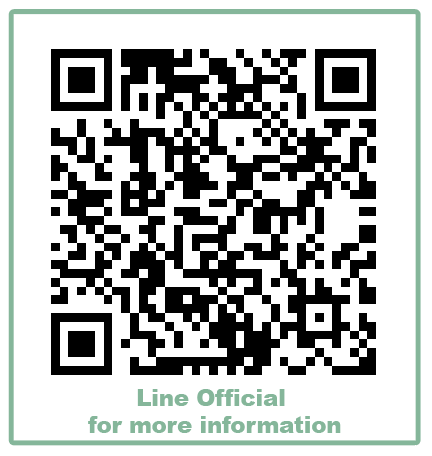A Study of Learning Management Conditions in Technology to Enhance the Creative Thinking Ability of Students with a Hearing Impairment
DOI:
https://doi.org/10.14456/educu.2024.12Keywords:
learning management conditions, creative thinking, students with a hearing impairment, technologyAbstract
The purpose of this study was to study the problems and needs of learning management conditions in enhancing creative thinking among students with a hearing impairment. The study only included ninety-nine participants of the eleven schools in school for the deaf that used multi-stage sampling, including both specific and purposive sampling. The main instrument used was the questionnaire on the learning management conditions and data were analyzed and presented using frequency analysis, percentage, mean, and standard deviation. The results of this study indicated that the learning management conditions to enhance creative thinking among hearing impaired students are as follows: the actual condition was found to be at a high level (M = 3.72,
SD = 0.56), and the expected condition was found to be at the highest level (M = 4.61, SD = 0.36).
References
ภาษาไทย
ปฐมพร บำเรอ. (2564). การพัฒนารูปแบบกิจกรรมนันทนาการประเภทการเต้นรำ ที่ส่งเสริมความคิดสร้างสรรค์
และนวัตกรรม สำหรับผู้เรียนในระดับอุดมศึกษา. [ปริญญานิพนธ์ปรัชญาดุษฎีบัณฑิต,
มหาวิทยาลัย ศรีนครินทรวิโรฒ]. The Central Library of Srinakharinwirot University.
http://ir-ithesis.swu.ac.th/dspace/bitstream/123456789/1735/1/gs591150019.pdf
พรรณี ลีกิจวัฒนะ. (2558). วิธีการวิจัยทางการศึกษา (พิมพ์ครั้งที่10). มีน เซอร์วิส ซับพลาย.
เพลงรบ ฐิติกุลดิลก, วรรณี เนียมหอม และวีรฉัตร สุปัญโญ. (2560). แนวทางการจัดบริการทางการศึกษาขั้นพื้นฐาน ที่ตอบสนองต่อความต้องการ ของนักเรียนที่มีความบกพร่องทางการได้ยิน. วารสารอิเล็กทรอนิกส์
Veridian มหาวิทยาลัยศิลปากร (มนุษยศาสตร์สังคมศาสตร์และศิลปะ), 10(2), 2294 - 2307.
ไพฑูรย์ สินลารัตน์, นวลจิตต์ เชาวกีรติพงษ์, ทวีศักดิ์ จินดานุรักษ์, ชัยวัฒน์ สุทธิรัตน์,ไสว ฟักขาว, และ
ศรเนตร อารีโสภณพิเชฐ. (2559). คิดสร้างสรรค์: สอนและสร้างได้อย่างไร (พิมพ์ครั้งที่ 2).
โรงพิมพ์แห่งจุฬาลงกรณ์มหาวิทยาลัย.
วารี ถิระจิตร. (2545). การศึกษาสำหรับเด็กพิเศษ. สำนักพิมพ์จุฬาลงกรณ์มหาวิทยาลัย.
ศรียา นิยมธรรม และประภัสสร นิยมธรรม. (2540). พัฒนาการทางภาษา. รำไทย เพรส.
สมจิต จันทร์ฉาย. (2557). การออกแบบและพัฒนาการเรียนการสอน. เพชรเกษมพริ้นติ้ง.
สุวิมล ว่องวาณิช. (2562). การวิจัยประเมินความต้องการจำเป็น (พิมพ์ครั้งที่ 4). สำนักพิมพ์แห่งจุฬาลงกรณ์มหาวิทยาลัย.
อรพรรณ์ แก้วกันหา, จุฑามาส ศรีจำนงค์ และจุรีรัตน์ ประวาลลัญฉกร. (2560). การวิจัยปฏิบัติการเพื่อพัฒนาความคิด
สร้างสรรค์ รายวิชาคอมพิวเตอร์ของนักเรียนชั้นประถมศึกษาปีที่ 5 โรงเรียนบ้านน้้าคิว สังกัดสำนักงาน
เขตพื้นที่การศึกษาประถมศึกษาเลย เขต 1. วารสารศึกษาศาสตร์ มหาวิทยาลัยนเรศวร, 19(2), 289-304.
อาภรณ์ ใจเที่ยง. (2553). หลักการสอน (ฉบับปรับปรุง) (พิมพ์ครั้งที่ 5). โอเดียนสโตร์.
ภาษาอังกฤษ
Schmoelz, Alexander. (2017). On Co-Creativity in Playful Classroom Activities. Creativity
Theories–Research-Application, 4(1), 25-64.
Kramer, A. & Buck, L. A. (1976). Poetic Creativity in Deaf Children. American Annals of the Deaf, 121(1), 31-37.
Levine, N. (1963). Semi-Open Sets and Semi-Continuity in Topological Spaces. American
Mathematical Monthly, 70(1), 36-41.
Passig, D. & Eden, S. (2000). Improving Flexible Thinking in Deaf and Hard of Hearing Children
with Virtual Reality Technology. American Annals of the Deaf, 145(3), 286-291.
Penelitian, J., Pendidikan Ipa, Sukarso, A., Artayasa, P., Bahri, S. & Azizah, A. (2022). Provision of
Creative Teaching Materials in Improving Creative Disposition and Creative Thinking Skills
of High School Students. Jurnal Penelitian Pendidikan IPA, 8(6), 2728 - 2736.
Silver, R. A. (1977). The Question of Imagination, Originality, and Abstract Thinking by Deaf
Children. American Annals of the Deaf, 122(3), 349-354.
Theriault, D. & Stone, G. (2023). Promoting creativity in undergraduate recreation and leisure
services classrooms: An overview. SCHOLE: A Journal of Leisure Studies and
Recreation Education, 38(1), 46-57
Downloads
Published
How to Cite
Issue
Section
License

This work is licensed under a Creative Commons Attribution-NonCommercial-NoDerivatives 4.0 International License.



